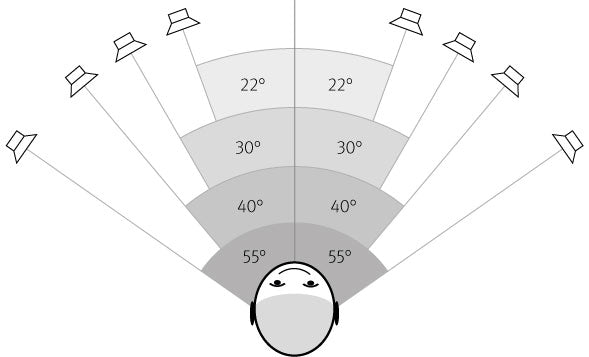




SPL Audio Phonitor se
SPL Audio Phonitor se

Our entry model into the world of VOLTAiR headphone amplifiers.
The Phonitor se is focused on the essentials – without compromising on quality.
It has the same audio signal amplification as its bigger brothers Phonitor x and Phonitor xe.
With the optional DA converter, it can also play from digital sources.
The Phonitor Matrix provides two of the most common Phonitor Matrix settings as switchable presets. It lets you experience music on headphones as being played back through speakers.
Thanks to VOLTAiR technology in the highest sound quality.

Everything under control
The volume is adjusted with a massive, milled aluminum, rotary knob. The Alps RK27 “Big Blue” potentiometer gives a pleasant “spoon in the honey” rotary feel.
In addition to an analog source, three additional digital sources can be connected to the Phonitor se with the optional DAC768xs.

Headphone Output with Power
The Phonitor se offers a 6.35 mm jack for connecting headphones with jack plug.
Up to 2 x 5 watts of output power is available at this socket. This allows even very power-hungry headphones such as magnetostats or electrostats to be driven effortlessly.

The Revolution: Phonitor-Matrix
The Phonitor Matrix is the revolution in the headphone amplifier.

Thanks to the Phonitor Matrix, music can be experienced on headphones as if it was played on speakers. The tiring super stereo effect is a thing of the past.
Enjoy music without listening fatigue and exactly the way it should be heard.
Unlike the bigger Phonitor models, where the “Angle” switch can be used to select the opening angle of the stereo stage, this parameter is fixed at a default value of 30° for the Phonitor se. The “Crossfeed” parameter can be set in two stages – “C1” and “C2”. “C2” provides higher crosstalk/crossfeed than “C1”.

Phonitor Matrix
Thanks to the Phonitor Matrix, music can be experienced on headphones as if it was played on speakers
Crossfeed
Listening on headphones is different from listening on loudspeakers.
The biggest difference is the lack of crossing signals of the sound signal from the left speaker to the right ear and from the right speaker to the left ear.

Conventional
This results in an unnaturally wide and wrong stereo image.
The various sound sources of the audio signal are not localized as the sound engineer intended them to.

Correct
The SPL Phonitor Matrix will correct false stereo image with an analog circuitry and ensures a correct representation of the stereo image and a relaxed listening experience.
Music is normally produced and mixed for playback on stereo speakers.
Listening on headphones is different from listening on loudspeakers. The biggest difference is the lack of crossing signals of the sound signal from the left speaker to the right ear and from the right speaker to the left ear. These crossing signals are missing in conventional headphone listening, because there are no signals crossing from one side of the headphones to the other.
This results in an unnaturally wide stereo image and the various sound sources of the audio signal are not localized as the sound engineer intended them to. This effect is often referred to as “super stereo effect”. During conventional listening on headphones, our brain can balance the false representation of the playback to a certain extent – but this is very exhausting.
The SPL Phonitor Matrix can correct this false stereo image with an analog circuitry. The Phonitor Matrix therefore not only ensures a correct representation of the stereo image, but also a relaxed listening experience.
The two main parameters of the Phonitor Matrix are Crossfeed and Angle:
Crossfeed determines the crossing signals of the channels, the so-called interaural level difference.
Angle determines the opening angle of the stereo image, the so-called interaural time difference.
Crossfeed

Level and frequency adjustment of the right (red) and left (green) audio channel at maximum crossfeed.
Angle

Settings for the speaker placement angle to determine the interaural time difference.
Center of Attention
To make the listening experience even more perfect, the level of the center of the stereo image needs to be attenuated when the Phonitor Matrix is active. This ensures that not only the position of all sound sources is correct but also their volume.
In the Professional Fidelity Phonitor devices this value is set to a fixed attenuation of -1 dB, which is the best choice for getting an authentic representation of the sound stage.
Source of joy
The Phonitor se is equipped with gold-plated RCA sockets for the analog input.
The optional DAC768xs adds three more digital sources: USB, COAX und OPTICAL.
PCM audio is received in S/P-DIF format, both coaxial (RCA) and optical (Toslink F06).
Both PCM audio and DSD audio can be converted via USB.
The DAC automatically picks up the sampling rate and resolution of the digital playback source. No matter if a streamer, computer or CD player is connected. No further settings on the Phonitor se are necessary.

The DAC768xs
The converter chip in the optional digital-to-analog converter is the highly acclaimed AKM AK4490 Velvet Sound™ premium DAC chip, which thanks to its architecture reproduces the finest sound details.
It converts PCM audio at 32-bit resolution and a sampling rate of up to 768 kHz, which is 16 times the resolution of a CD. Direct Stream Digital is also supported up to a resolution of DSD4 or DSD256.
Unlike the DAC768, which is built into the Director Mk2 for example or available as an option for the Phonitor xe, the DAC768xs does not offer an AES/EBU digital input. The SPL DLP120 with VOLTAiR technology was also not included in the DAC768xs. Nevertheless, it offers a great performance that is unparalleled in this league.
Sounds good
With all devices of the Professional Fidelity series we develop not only according to plan, but also by ear. Many important components are installed on the circuit boards using Through-hole technology. This way we can ensure that we can use the best sounding components.

The VOLTAiR Technology
The 120V technology is our reference technology. The 120V technology is unique in the world. It operates at a DC voltage of 120 volts. This is four times that of IC-based semiconductor op-amps. In our Professional Fidelity series, we refer to this unsurpassed technology as VOLTAiR technology.

The highest possible audio quality requires the highest possible audio operating voltage.
The 120V technology works with +/-60 V. To be able to handle such a high voltage, we have developed special proprietary operational amplifiers that can operate with a DC voltage of +/-60 V: the SPL 120V SUPRA operational amplifiers.
This high voltage would destroy conventional components and operational amplifiers.
By the way, the “120V” in the name of the technology has nothing to do with the local mains voltage from the mains power socket. This is about the operating voltage inside the device with which the audio signals are processed.
The mains voltage from the mains power socket is transformed to the required secondary voltage in the device’s internal linear power supply with toroidal transformer. Rectifiers convert this AC voltage into DC voltage required in the audio device.
VOLTAiR is a composition of the terms Volt and Air. Volt is the unit for electrical voltage and Air stands for the unlimited space the music can breathe in.
VOLTAiR symbolizes the perceived limitless dynamics resulting from high audio voltage.
Comparison
Most audio devices work with an internal operating voltage of +/-15 volts and can thus process a maximum input level of +21.5 dBu. If a DAC, for example, has an output level of +22 dBu at 0 dBFS, level peaks of the music material would already cause overloads in the input stage of the device.
All components in the audio device often operate at their limits. The result is an unsteady sound that causes stress and faster ear fatigue.
SPL devices with VOLTAiR technology can handle input levels of +32.5 dBu thanks to the higher internal operating voltage of +/- 60 volts – thus offering 12 dB more headroom. All components consequently operate continuously in the optimum operating range. The result is a very pleasant, natural and relaxed sound experience. So you can enjoy your music in every detail.
These diagrams clearly show the superiority of the VOLTAiR technology in comparison to other circuits with lower, common operating voltages.



VOLTAiR is that good
In the lab, we pitted Phonitor xe against the best audio measurement system and found that Audio Precision could not measure VOLTAiR technology.

This product has no reviews yet.
You may also like
Free shipping
On domestic orders over $150
Top notch support
Personalized support from a company that loves audio as much as you do. Contact us by email or through our discord seven days a week.
Secure payment
All payments are securely processed through shopify. We also offer a variety of payment methods.
Guaranteed Best Prices
Well match any authorized store pricing
